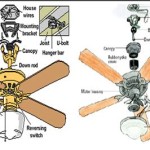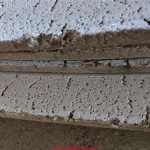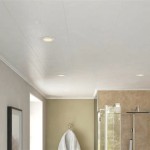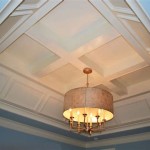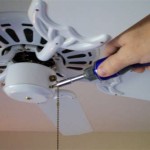How to Cut Crown Moulding for Vaulted Ceilings: A Comprehensive Guide
Installing crown moulding adds a touch of elegance and sophistication to any room. However, when dealing with vaulted ceilings, the process becomes significantly more challenging. Unlike standard 90-degree corners, vaulted ceilings present angles that require precise measurements and cuts to ensure a seamless and aesthetically pleasing finish. Correctly cutting crown moulding for these complex angles is not simply a matter of guesswork; it demands a thorough understanding of angles, cutting techniques, and the use of specialized tools.
This article provides a detailed, step-by-step guide on how to successfully cut crown moulding for vaulted ceilings. It covers the essential tools, methods for determining the correct angles, and detailed cutting instructions to achieve professional-looking results. By following these guidelines, one can overcome the challenges posed by vaulted ceilings and create a visually stunning crown moulding installation.
Determining the Vaulted Ceiling Angle
The first crucial step in cutting crown moulding for vaulted ceilings is to accurately determine the angle where the walls meet. This angle dictates the mitre and bevel settings required for precise cuts. Several methods exist for determining this angle, each with its own advantages and disadvantages. The method chosen often depends on the tools available and the complexity of the vault.
One common method involves using a protractor or angle finder. Digital protractors offer the highest degree of accuracy and can display the angle in degrees. A basic protractor can also be used, though it may require more careful reading and interpretation. Place the protractor against the intersection of the two walls, ensuring it is flush against both surfaces. Read the angle displayed on the protractor. This angle represents the total angle of the corner.
Another method leverages the use of a bevel gauge. The bevel gauge has two adjustable arms that can be tightened to hold a specific angle. Place the arms of the bevel gauge against the two walls, ensuring they are flush against the surfaces. Tighten the locking mechanism to secure the angle captured by the gauge. Transfer this angle to a T-bevel. The T-bevel now replicates the angle of the vaulted ceiling. This T-bevel can then be used to measure the angle with a protractor or transfer the angle directly to the mitre saw for setting the appropriate cut angles.
For more complex vaulted ceilings, particularly those with irregular shapes or curves, a contour gauge may be necessary. This tool consists of a series of thin, movable pins that conform to the shape of the surface. Press the contour gauge against the intersection of the walls to capture the profile of the angle. Transfer this profile to a piece of cardboard or paper and trace the outline. Use a protractor to measure the angle of the traced outline. While this method is more time-consuming, it can provide a more accurate representation of complex angles compared to simpler methods.
Once the total angle is determined, it is essential to divide this angle by two. This division provides the mitre angle required for cutting the crown moulding. For example, if the total angle is 120 degrees, the mitre angle will be 60 degrees. This angle represents the angle at which the two pieces of crown moulding will meet to form the corner.
Setting the Mitre Saw for Accurate Cuts
After accurately determining the mitre angle, the next step is to set the mitre saw accordingly. Understanding the mitre saw's functions and how they relate to crown moulding cuts is paramount. The mitre saw typically has two adjustable settings: the mitre angle and the bevel angle. The mitre angle controls the horizontal angle of the blade, while the bevel angle controls the vertical angle.
Crown moulding is typically cut "nested," meaning it is placed in the saw as it would be installed on the wall. This method simplifies the cutting process and reduces the risk of errors. To cut crown moulding nested, place the moulding upside down and at the same angle it will be installed against the wall. This requires understanding the spring angle of the moulding. The spring angle is the angle at which the moulding sits against the wall and ceiling. This angle is typically either 45 degrees or 52 degrees, though it can vary depending on the specific profile of the moulding.
If cutting a right corner, place the moulding with the bottom edge against the fence of the saw and the top edge resting on the table. Set the mitre saw to the calculated mitre angle (half of the total corner angle). The bevel angle will typically be 0 degrees, as the moulding is cut nested. For left corners, the process remains the same, but the mitre angle will be set in the opposite direction.
For situations where the nested method is not feasible or desired, the crown moulding can be cut "flat." This method involves laying the moulding flat on the saw table and adjusting both the mitre and bevel angles. This method requires careful calculation of both angles and a thorough understanding of the geometry involved. Consult a crown moulding angle chart or utilize online calculators to determine the appropriate mitre and bevel settings based on the total corner angle and the spring angle of the moulding. Accurate setup is crucial for achieving a precise cut.
Before making the final cuts, it is highly recommended to perform test cuts on scrap pieces of crown moulding. This allows one to verify the accuracy of the mitre saw settings and make any necessary adjustments. Align the two test pieces together to check the fit of the corner. If the pieces do not meet perfectly, adjust the mitre angle slightly and repeat the test cut until a seamless joint is achieved. This iterative process minimizes waste and ensures that the final pieces of crown moulding fit correctly.
Cutting Techniques and Best Practices
Once the mitre saw is properly set and test cuts have been verified, the focus shifts to the cutting techniques to ensure clean and precise cuts. Consistent and controlled movements are essential for achieving professional-looking results. Consider the orientation of the moulding when cutting to ensure all pieces fit together correctly.
Before each cut, ensure the crown moulding is securely held in place against the fence of the mitre saw. Use clamps to hold the moulding firmly against the fence to prevent it from shifting during the cutting process. This is especially important when cutting large or heavy pieces of moulding. Movement during the cut can result in inaccurate angles and a poor fit. Ensure the clamps used do not obstruct the blade's path.
When activating the mitre saw, allow the blade to reach its full speed before making contact with the moulding. This ensures a clean and smooth cut. Slowly and steadily lower the blade through the moulding, maintaining a consistent pressure. Avoid forcing the blade through the material, as this can cause splintering or chipping. A slow and controlled cutting motion produces the best results.
After completing each cut, carefully remove the moulding from the saw. Check the cut angle and the overall length of the piece. Use a sanding block or fine-grit sandpaper to smooth any rough edges or imperfections. This prepares the surface for a seamless joint. Accurate measurements and consistent cutting techniques minimize the need for extensive touch-ups.
When installing the crown moulding, use construction adhesive and finish nails to secure it to the wall and ceiling. Apply a bead of construction adhesive to the back of the moulding before installing it. This provides a strong bond and helps to fill any gaps between the moulding and the surface. Use a nail gun to drive finish nails through the moulding into the wall studs and ceiling joists. Space the nails evenly along the length of the moulding to ensure a secure and even attachment.
For corners that do not meet perfectly, use wood filler or caulk to fill any gaps or imperfections. Apply the filler or caulk evenly and smoothly, blending it with the surrounding surface. Sand the filled areas smooth after the filler or caulk has dried. This creates a seamless and professional-looking finish. Painting or staining the crown moulding after installation completes the process and adds the final touch of elegance.

Install Crown Molding Cathedral Vaulted Ceiling

How To Install Crown Molding On A Vaulted Cathedral Ceiling Without Transition Piece
How To Cut A Crown For Vaulted Ceilings Quora

Installing Crown Molding Around A Cathedral Ceiling Fine Homebuilding

Installing Crown Moulding On A Sloped Ceiling Doityourself Com Community Forums

Install Crown Molding Cathedral Vaulted Ceiling

How To Install Crown Molding On Vaulted Or Cathedral Ceilings The Joy Of Moldings

Installing Crown Moulding Part Two Canadian Woodworking

Installing Crown Moulding On A Sloped Ceiling Doityourself Com Community Forums

How To Cut A Vaulted Sloped Cathedral Up Crown Molding Corner The Easy Way With Creative
Related Posts


